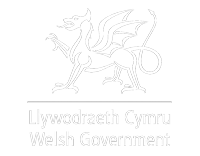On 24th December, the UK farming industry received an early Christmas present as a Free-Trade Agreement (FTA) was agreed with the EU, meaning that agricultural goods traded with the EU will not be subject to tariffs or quotas. This Trade and Cooperation Agreement should minimise the disruption following the ending of the Transition Period on 31st December 2020. However, with a whole range of Non-Tariff Measures (NTMs) (checks, paperwork etc.) being imposed from that point, there will be added friction.
The negotiations culminated in a frantic final haggle on fish quotas. When a breakthrough was achieved on this issue, the remaining level playing field (LPF) and governance issues were quickly addressed. The key provisions of the FTA are:
- Trade in goods: will be tariff-free and quota-free on all goods trade between the UK and the EU. This includes agri-food products.
- NTMs: will be applicable on UK exports to the EU from January. For EU imports to the UK new rules will become applicable on a phased basis between January and June 2021, based on the provisions of the UK Border Operating Model. Linked with NTMs, additional provisions of the Deal include;
- Rules of Origin (RoO): have been relaxed for up to 1 year so that companies have more time to gather the information necessary to meet RoO requirements. These are basically local content rules which need to be met to ensure that goods traded between the UK and the EU are eligible for tariff-free treatment. As a rule of thumb for agri-food products, 90% or more of the goods’ contents needs to be eligible (i.e. is UK produced and not originating from another ineligible third country). This relaxation is important and helpful to traders as it goes some way to providing an implementation period to permit companies to adapt to the changed trading environment.
- Sanitary and Phytosanitary (SPS) checks: will become applicable immediately on UK exports to the EU. This means that lamb exports to the EU will be subject to 15% physical checks whilst there will be a 30% physical check rate for dairy products for human consumption. In the SPS area generally, it is arguable that the UK-EU FTA is lacking in ambition. There will be a Specialised Committee set-up for SPS within the Governance structure of the agreement, which might bring some further easements in the future. However, for now, the treatment of UK exports to the EU will not be much better than that of a standard third country, and certainly significantly worse than the level of access that New Zealand enjoys on its exports to the EU.
- Fisheries: the quotas for EU fishing vessels’ access to UK waters will be reduced by 25% over a five and a half year transition period. This quota will be repatriated to UK flagged vessels over this same period. Thereafter, annual negotiations would take place on the level of access that EU fishing vessels would have to British waters. This arrangement has been met with criticism from the UK fishing industry which was anticipating a greater Brexit dividend.
- LPF: the EU pushed very hard on this issue which relates to upholding existing standards on the environment and labour laws so that the UK for instance cannot gain a competitive advantage in the future by undercutting EU rules. The agreement includes mechanisms to enable one side to retaliate against the other if it is found that there is a breach of the LPF provisions. Theoretically, this could mean that retaliatory tariffs could be introduced on agri-food trade in the event of such a breach, even if this violation occurs in another sector.
- State Aid: importantly, from a UK perspective, Britain can have its own independent system of subsidy control and neither party is bound to follow the rules of the other. However, LPF provisions apply to prevent one side from gaining a significant competitive advantage over the other.
- Ratification: in the UK, Parliament was recalled on 30th December to vote and as Labour had announced its intention to vote for the deal, its passing was a formality in the UK. In the EU27, the process is somewhat more complicated. Given the limited time available, the EU has decided to “provisionally apply” the deal from January. However, it will be scrutinised further by both the European Parliament and at Member State level. This process is set to be undertaken during January and February.
Implications for UK Agri-Food
The announcement of a UK-EU trade deal was greeted with a sense of relief by the UK food and farming industry as it provides much greater certainty for the sector. The major exception to this is the seed potatoes sector as exports from the UK to the EU will become prohibited. This is a significant loss as the EU is a major export market for the British seed potatoes’ sector, particularly Scotland, which has amongst the highest product standards for seed potatoes globally.
Overall, the anticipated impacts on UK agricultural output and trade are expected to be limited. The Andersons Centre has done some recent modelling work for the Scottish Government and the changes under the Deal are primarily due to the imposition of NTM costs. These which generally range from just 0.1% (wheat, barley) up to 3% (beef) under a Free Trade Deal. These findings are corroborated by recent comments from the Tesco Chairman (John Allan) who believes that the Brexit Deal will not lead to any significant effects on consumer prices.
Other key issues to watch out for include;
- Exchange rates: these have a major bearing on the competitiveness of UK agri-food produce on international markets. On the announcement of the UK-EU FTA, Sterling rose by 0.5% against the Dollar. Generally speaking, a stronger Sterling is bad for UK farming as the prices of British agri-food produce become more expensive on global markets, whilst imports become cheaper. In June 2016, following the referendum, Sterling weakened by 15-20% against the Euro and has not recovered since. Where Sterling goes from here will have a major bearing on the UK agri-food sector’s financial performance.
- Other FTAs: the UK has already made significant progress in negotiations with Australia and New Zealand, as well as the US to a lesser extent. Some anticipate deals to be struck with Australia and New Zealand in 2021. Given the extent to which these countries trade in beef, lamb and dairy products, they could exert significant competitive pressure on British producers if they get better access to the UK market.
- Allocation of EU28 Tariff Rate Quotas (TRQs): now that a UK-EU FTA has been reached, the likes of New Zealand are already highlighting issues with the proposed allocation of EU28 TRQs by the UK and the EU27, who essentially suggested in December 2018 to split the existing TRQs on the basis of historic trade. New Zealand amongst others objected to this at the time and are now bringing this topic back to the agenda. This will need to be addressed at the WTO level in the coming months.
Given the extremely limited timeframe during which the UK-EU FTA was agreed, it is inevitable that a whole myriad of other issues will emerge once experts have had time to parse through the 2,000 pages of legal text and annexes. Overall, the trade deal is historic and marks the beginning of a new era in the UK’s relationship with Europe. However, as with trading relationships between other close neighbours (e.g. the US and Canada), the UK’s trading relationship with the EU is going to evolve and this will necessitate further negotiations in the future, both on the implementation and governance of the existing agreement, but potentially on developing new accords. In this respect, we’ve not reached the end of the road on Brexit. Whilst the topic might (mercifully) move down the agenda as we move forward, it will not disappear from the news.
Further information on the UK-EU Trade and Cooperation Agreement, including the legal text, is available via: https://www.gov.uk/government/publications/agreements-reached-between-the-united-kingdom-of-great-britain-and-northern-ireland-and-the-european-union
If you are interested in getting a concise and unbiased commentary on the key issues affecting business performance in the UK agri-food industry, click on the link below for a 90-day free trial of Andersons’ AgriBrief Bulletin:




